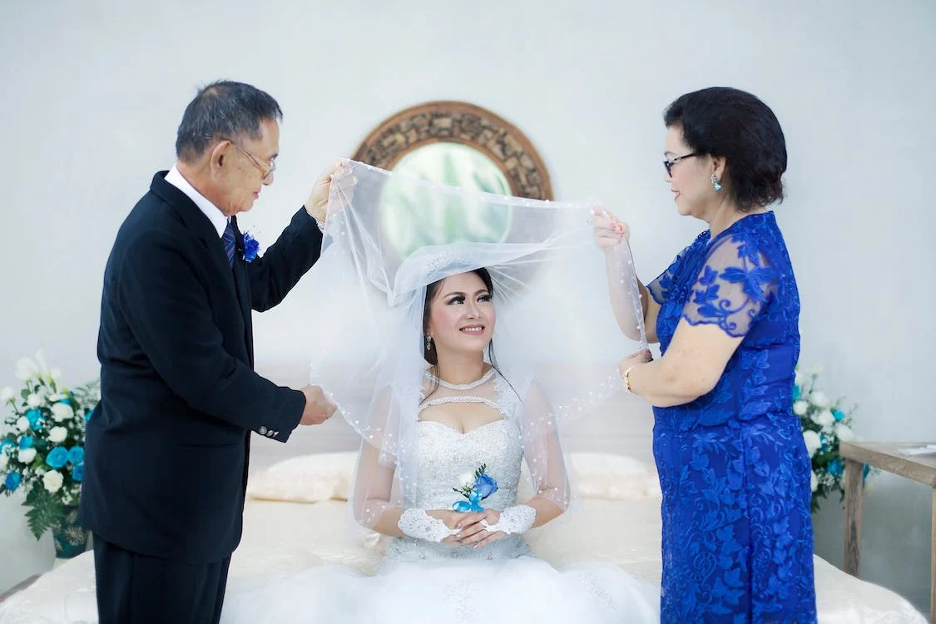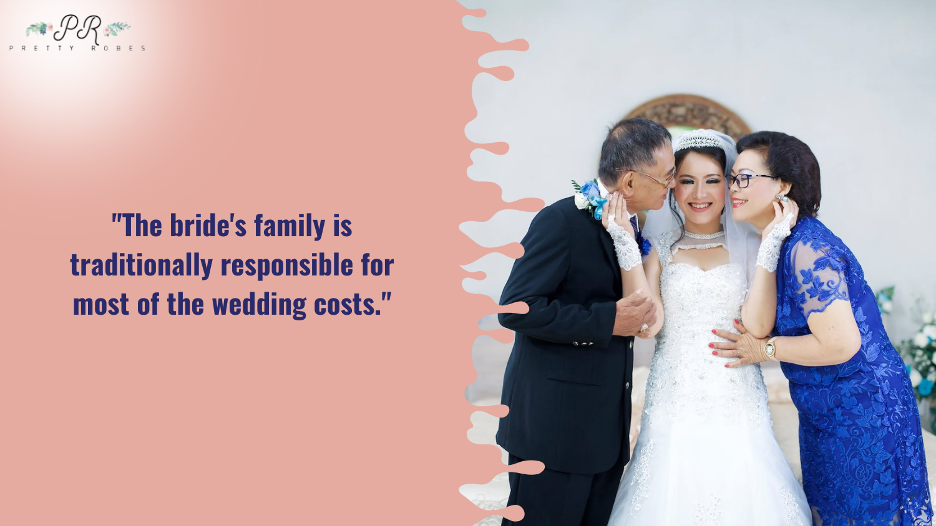Looking Into Tradition: Whose Family Pays for What?
2023.03.01

Source: Pexels.com
Although many modern couples are breaking away from traditional wedding practices, the expectation that parents pay for the wedding is still prevalent. While many couples try to contribute to the costs, the Brides American Wedding Study reports that parents still cover between 35 and 42 percent of the total expenses.
According to The Knot’s annual Real Weddings survey of nearly 13,000 couples, in 2016, only 1 in 10 couples paid for their wedding entirely by themselves. Parents of the bride and groom contribute about $19,000 to the wedding or about two-thirds of the total cost. This includes an average of $12,000 from the bride's parents and $7,000 from the groom's. Couples are getting engaged later in life when they have their own assets and income to spend, and they often want more control over the planning process.
Moreover, following the landmark 2015 U.S. Supreme Court ruling recognizing same-sex marriages, more LGBTQ couples than ever before reported increased parental involvement in financing their weddings. However, most LGBTQ couples in the United States pay for their weddings themselves.
The shift in who pays for the wedding is coming from both generations. Parents whose retirement prospects and financial security have taken a hit in the recession may also be more hesitant to shoulder the entire bill. Despite this, one-third of parents in the WeddingWire survey spent more on their child's wedding than they budgeted for, and 1 in 5 used a credit card to finance their contribution.
Today, the lines of financial responsibility for weddings are blurred, and some couples choose to pay for their wedding entirely on their own. Other couples may decide to split the costs between themselves and family members. It is essential to strike a balance that works for everyone involved.
A budget is essential to the wedding planning process, and it can easily go overboard, so it's nevertheless important to decide who pays for what in the wedding budget. Couples may not be bound by traditional payment etiquette, but if the wedding expenses are big enough to shoulder on your own and you are confused about who pays what, we clear it out for you:
The Bride’s Side
Traditionally, the bride's family is responsible for paying for most of the costs of a wedding, including the engagement party, wedding dress, bridesmaid robes, wedding planner, invitations and stationery, photography and videography, transportation and accommodation for bridesmaids, pre-wedding parties, ceremony and reception, flowers for both the ceremony and reception, décor, wedding cake, and morning-after brunch.

There is no strict tradition when it comes to who pays for the engagement party, so either the bride's or their partner's family can cover all the expenses. The bride's family is also responsible for the invitations and stationery, including engagement announcement cards, save-the-dates, wedding invitations, and RSVP cards. They must also pay for day-of paper such as menus, ceremony programs, and place cards.
Hiring a professional wedding planner is highly recommended. Coincidentally, this is one of the most important aspects of the wedding that the bride's family pays for. A wedding planner can help with many responsibilities, from communicating with wedding vendors to staying within the wedding budget.
The biggest expense that the bride's family traditionally pays for is the wedding ceremony, which includes the venue, décor, and music as well as the bride's attire and accessories, including her wardrobe for all the pre-wedding events such as the shower, bach party, rehearsal dinner, and honeymoon.
They are responsible for hiring a wedding photographer or videographer to capture all the wedding memories and the attire that comes with it, such as monogrammed robes for pre-wedding photo ops. Typically, they pay for the bridal party's accommodations, so they cover the costs of the wedding party's transportation and lodging.
However, as times have changed, there is no pressure to follow these traditions, and it is up to you to decide how much your families contribute towards your wedding expenses. You can always choose to split the expenses with your partner's family or pay for all the wedding expenses. However, when it comes to items solely for use of the bride’s family, such as the mother of the bride robe, the side of the bride pays for them.
Just make sure that you open the discussion without pressuring your family into following suit. Discussing this matter carefully with your family will help you achieve the cooperation you want and convince them to really help pay for the expenses that traditionally fall to you as the bride. You can have a budget estimate in an Excel/Google document to help your parents provide feedback and be able to pitch in.
The Groom’s Side
Traditionally, the groom and his family have their financial responsibilities, although not as much as the bride’s family. They are typically responsible for paying for the marriage license, officiant fee, rehearsal dinner, transportation and accommodation for groomsmen, DJ or band, liquor and alcohol for the reception, and the honeymoon. However, some of these expenses are becoming more collaborative and even crowd-funded.
One of the biggest expenses for the groom is purchasing the engagement ring and wedding band for the bride. Additionally, the groom is responsible for his own attire, wedding gifts for the bride and groomsmen, and the honeymoon if his family is not covering the cost. However, it is common for the groom's family to pitch in and help cover some of these expenses.
In some cases, the groom's parents may cover the cost of the bride's engagement and wedding ring to help keep the financial burden off the couple. They may also host an engagement party if desired and pay for the groom and groomsmen's attire and accessories.
More Articles
Copyright © Fooyoh.com All rights reserved.